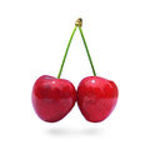10 Ways to Eat Cherries
Cherries are known for quite a few health benefits. They have been shown to lower cholesterol and triglycerides, reduce inflammation, arthritis, and pain, and help stop weight gain. It is said that eating 20 cherries a day can ward off inflammation altogether. They also contain lots of antioxidants, good for preserving cells against damage from free radicals or cancer.










